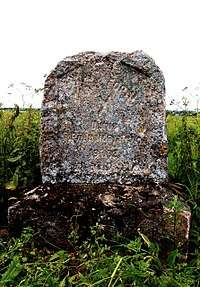Estonian Land Reform of 1919
The Estonian Land Reform Act 1919 (Estonian: 1919. aasta maareform) was passed in Estonia on the 10 October 1919 shortly after the independence of the nation earlier that year. The act expropriated land from the Baltic German landowners which had previously made up much of the landowning elite. As part of the act the government distributed the nationalised land to mainly Estonian small farmers.

Distribution of Land
The reforms expropriated 1065 manors (96.6% of large landowners were affected) of which only 57 manors came from Estonian owners with the rest owned mainly by Baltic Germans along with land from the Russian state and church land. The amount of land in total nationalised came to over 2.34 million hectares of land which accounted for 58% of the total agricultural land in Estonia. Manorial industrial enterprises were also nationalised by the state and sold (this included 225 vodka factories, 344 mills, 74 sawmills, 64 stone and clay industries, 18 dairies and 7 breweries). Overall about 53,000 Estonian settlers received expropriated land with 1.2mn hectares going to the 23,000 individuals affected by the land reform (though just 3.6% of land was given back to the former owner).[1][2].
Compensation
In 1926 the previous landowners affected by the reforms (mostly large native landowners) received a small amount of compensation[3].
References
- "The collection of articles on the 15th anniversary of the conclusion of diplomatic relations between Estonia and Germany . Embassy of the Republic of Estonia in Berlin 2007, p. 19" (PDF). Retrieved 2017-10-24.
- Mati Laur; et al. (2002). History of Estonia. Avita. p. 225. ISBN 9789985206065.
- "Mõisnikust talunikuks. Saksa põllumehed Eestis". Retrieved 2017-10-24.